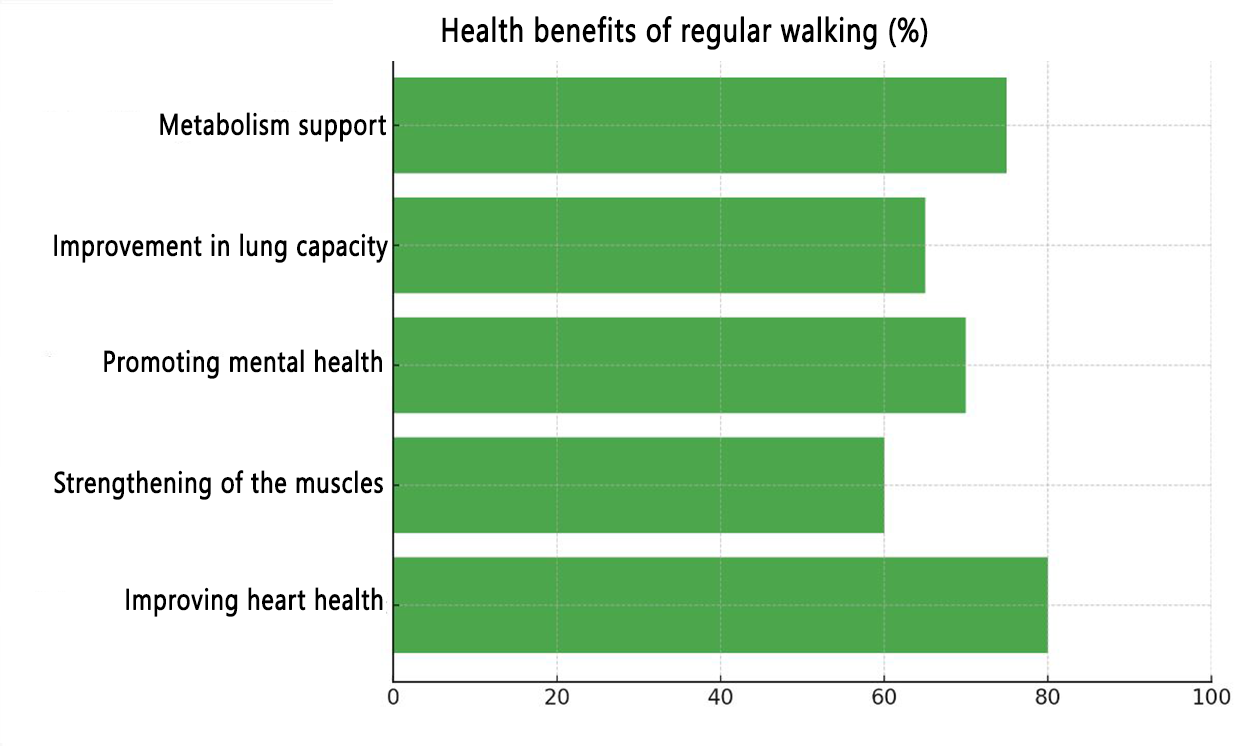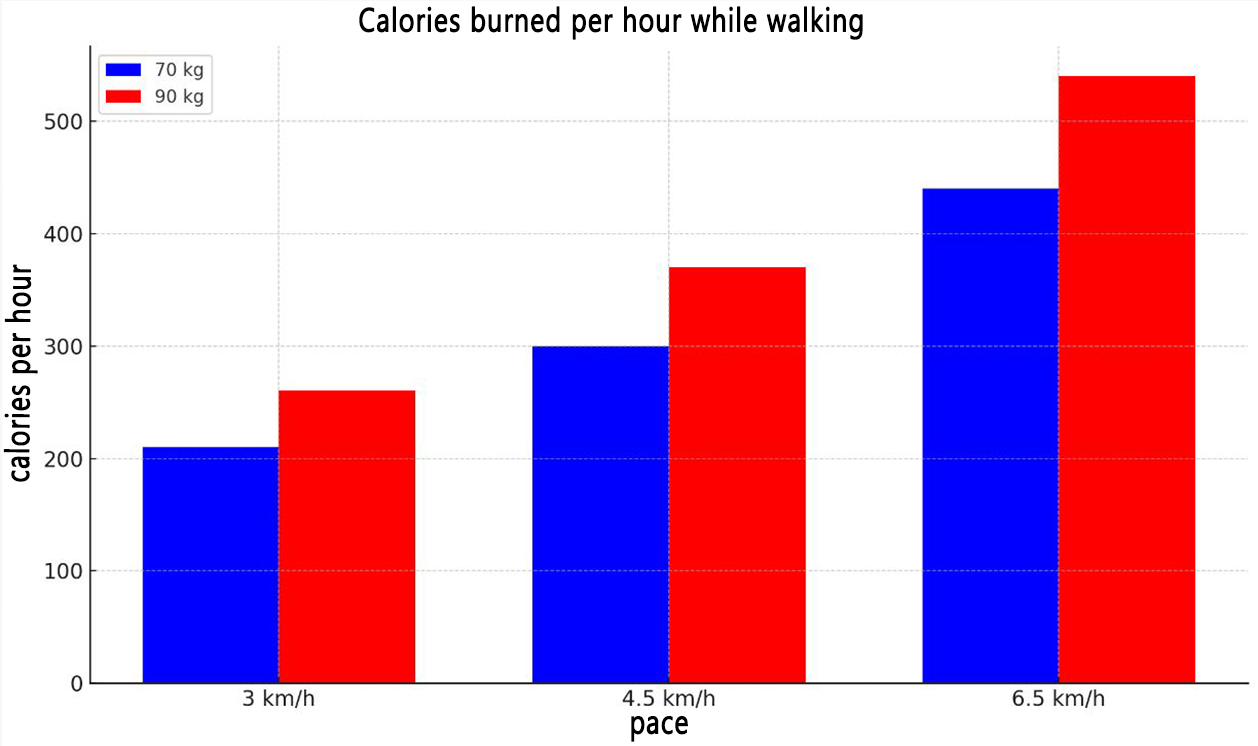Step Up Your Health: The Ultimate Guide to Maximizing Your Walking Routine
Step Up Your Health: The Ultimate Guide to Maximizing Your Walking Routine
Introduction
The summer months have come to an end, and as with every year, many of us return from vacation with cherished memories, a few souvenirs, and, in many cases, some added pounds. The relaxed holiday vibe, paired with delicious food and less physical activity, often leads to weight gain. But as summer wraps up, it also marks a period of reflection and reboot for many. It’s a time when we pledge to lead a healthier lifestyle, become more active, and pay attention to our diets.
Walking might just be the silver lining to transitioning into a healthier lifestyle. Not only is it one of the most natural forms of movement for humans, but it’s also one of the most effective ways to bolster both physical and mental health, all while shedding those extra pounds.

It’s essential to underscore that the emphasis on regular physical activity isn’t merely based on personal anecdotes or prevailing health fads. International health bodies like the World Health Organization (WHO) recognize the profound impact of exercise on global health. A recent report from the WHO pointed out that physical inactivity stands as one of the prime causes of global mortality. Shockingly, almost a quarter of adults worldwide and over 80% of the youth population are not adequately active.
The WHO suggests adults engage in at least 150 minutes of moderate-intensity or 75 minutes of high-intensity physical activity every week. To many, this might sound daunting, but when broken down, it amounts to just about 20 minutes of moderate activity daily. And what’s more straightforward and accessible than a daily walk?
But the benefits of walking extend beyond merely meeting the WHO’s recommended exercise targets. Walking can diminish the risk of heart disease, diabetes, and other chronic ailments. It can also help reduce blood pressure, elevate mood, and boost overall well-being.
In a time when many are keen on shedding those extra vacation pounds and looking for ways to be healthier in the upcoming months, walking might be the ideal stepping stone into a healthier routine. It requires no special equipment or gym membership and can be done virtually anywhere, anytime.

In this article, we’ll delve deeper into the science and perks of walking as a means for weight loss and health enhancement. Additionally, we’ll share practical tips and advice to ensure you make the most of your walking routine.
2 The Fundamentals of Walking as a Form of Exercise
Walking, in all its variations, stands as one of the most primal movements of mankind. Before we invented bicycles, constructed cars, or took up jogging as a favorite pastime, our ancestors walked. This uncomplicated activity is deeply ingrained in our evolutionary history and has played a pivotal role in our growth as a species.
At its most basic, walking is simply moving from one place to another on one’s feet. It’s the most natural and primeval form of human locomotion. Carried out at a moderate pace, it’s the method we often rely on in our daily lives, be it while shopping, working, or leisurely strolling.
In the English-speaking world, the term “walking” often stands synonymous with the act of moving on foot. However, especially in fitness contexts, “walking” might also hint at a more deliberate, purpose-driven walk at a moderate pace. It’s a more active approach to the activity, frequently with the intent of meeting fitness goals.
Speed walking or power walking is a more intense version of this practice. It’s characterized by a brisker pace and deliberate effort, often engaging the upper body and arms more vigorously to quicken the pace and burn more calories. In many scenarios, speed walking can match jogging in its effectiveness, yet typically presents less strain on the joints, making it more accessible for many.

The evolution of humans to an upright posture, known as bipedalism, provided us with unique advantages over other creatures. This adaptation allowed our ancestors to traverse greater distances efficiently, while also freeing their hands for using tools or carrying food. This upright movement has shaped not only the way we move but also the structure of our bodies, notably our skeletal system and musculature.
Our inherent inclination towards walking is not just a matter of convenience or habit. It’s integral to our identity as humans. In today’s world, where sedentary lifestyles are commonplace, rediscovering and incorporating walking into our daily routines can help us reconnect with this fundamental human endeavor, while also enhancing our health and well-being.
3. Health Benefits of Walking
Walking isn’t merely an uncomplicated and accessible mode of exercise. It also extends a myriad of health benefits. Although frequently labeled as a “gentle” form of exercise, regular walking can impart profound positive impacts on both body and mind.
Heart Health
The heart reaps significant rewards from consistent walking activity. Walking elevates the heart rate, fortifies the heart, and enhances overall cardiovascular function. This can lead to better circulation, decreased blood pressure, and a diminished risk of heart diseases. Additionally, walking can assist in decreasing the “bad” LDL cholesterol while boosting the “good” HDL cholesterol, reducing the risk of arterial blockage.
Muscle Development and Bone Density
Though not typically associated with muscle building, walking does indeed foster muscle development, especially in the legs and lower back. Regular walking can also stave off bone degradation as one ages, crucial in preventing diseases like osteoporosis. The weight-bearing nature of walking supports bone density and can decrease the risk of fractures.
Mental Health and Stress Relief
Walking’s benefits aren’t limited to the physical frame alone. Walking has been shown to uplift mental states by releasing endorphins, our body’s renowned “feel-good” chemicals. It can help alleviate symptoms of depression and anxiety, bolstering overall well-being. Moreover, walking offers a respite from daily life’s hustle and serves as an effective stress reliever.
Lung Capacity and Breathing
Walking increases respiratory rates, potentially amplifying lung capacity and the efficiency of lung function. This can lead to enhanced oxygen exchange within the body, subsequently promoting cell health and overall physical performance.
Metabolic Benefits and Weight Loss
One of the most evident yet paramount benefits of walking is its role in weight management and metabolic health. Walking burns calories and, when practiced regularly and paired with a healthy diet, can assist in achieving or maintaining a healthy weight. It also elevates insulin sensitivity, potentially reducing the risk of type 2 diabetes.

Each of these advantages underscores the importance of walking as a fundamental yet potent exercise. It demands minimal gear and can be undertaken in nearly any setting, yet it proffers extensive health benefits.
4. Losing Weight through Walking: Myths and Truths
In today’s age, where fitness and wellness trends are omnipresent on social media, discerning fact from fiction can be challenging, especially concerning weight loss. Walking as a method of weight reduction is often overlooked. Can one truly shed pounds through mere walking? Let’s delve into some of the myths and truths about walking as a weight loss tool.
Can I Lose Weight by Walking?
The straightforward answer is: Yes, you can lose weight by walking. Like any form of exercise, walking burns calories. The number of calories burned varies depending on factors such as weight, walking speed, and the duration of the walk. Our previously created infographic illustrates how many calories can be burnt walking at different speeds and weights. It’s essential to note that calorie consumption is only one side of the weight loss equation. For effective weight loss, the calories burned need to exceed the calories ingested.
Discussion on Combining Diet with Walking
While walking alone can induce weight loss, especially if one previously led a rather sedentary lifestyle, significant and enduring results necessitate coupling regular walking with a balanced diet. A healthy diet ensures that you provide your body with the required energy and nutrients, while simultaneously creating a calorie deficit conducive to weight loss. Remember: It’s often easier to reduce 500 calories from your daily food intake than to burn 500 calories through exercise. Our second infographic juxtaposes calorie burn from walking with the calories from common foods, offering clarity on this perspective.
How Much Should One Walk to Lose Weight?
The answer to this question fluctuates based on individual goals, starting weight, and dietary habits. Broadly speaking, to lose half a kilogram of fat, one needs to burn approximately 3,500 calories. This can be achieved through a combination of heightened calorie burn from exercise (e.g., walking) and reduced calorie intake from food. For instance, if you burn an extra 300 calories daily through walking and curtail your food intake by 200 calories, you’d attain a weekly calorie deficit of 3,500 calories, shedding roughly half a kilogram. The precise duration and intensity of walking hinge on individual circumstances, but integrating regular walking breaks into your daily routine can mark a substantial difference.

At first glance, walking might seem rudimentary, but it’s a potent exercise. When executed correctly and consistently, it can pave the way for significant health benefits and weight loss. It’s crucial to stay informed and harbor realistic expectations to ward off disappointments and sustain motivation. With the right mindset and information, walking can unlock the door to a healthier and more joyous life.
5. How to Start Walking
Embarking on or maintaining a healthy lifestyle can sometimes feel daunting. However, walking is an accessible activity that nearly everyone can weave into their daily routine. Here are some steps to kick-start walking as a form of exercise:
Choose the Right Footwear and Gear
Comfort is paramount for a successful walking routine. Invest in a pair of quality walking shoes that provide support and cushioning. The shoes should fit snugly, but not be too tight. Also, consider suitable clothing for the weather. During cooler months, layering can be practical, allowing you to cool off as needed.

Set Realistic Goals
Start small. If you’ve been inactive for a while, initiate with a 10-minute stroll and gradually increase the duration. Set weekly or monthly objectives to keep your motivation thriving. For instance: “This week, I’ll walk for 15 minutes daily.”
Draft an Activity Schedule and Progress
Gradually Plan your walking sessions in advance. Maybe you’d prefer a morning walk to kickstart your day or an evening one for relaxation. Ensure you increment your walking duration progressively to sidestep overexertion or injuries. Elevating your walk by 5 minutes each week can be an effective approach.
6. Tips and Tricks for Effective Walking
Walking might seem straightforward, but as with any form of exercise, there are techniques to amplify its efficacy and pleasure:

Ponder the Right Pace and Rhythm
Your optimal pace is one where you feel challenged but can still maintain a conversation. This is frequently termed a “comfortably challenging pace.” For example, if you’re breathless after walking for 10 minutes, consider slowing down while maintaining a consistent rhythm.
Emphasize Technique and Posture
Maintain an erect posture. Your shoulders should be relaxed and drawn back, chin parallel to the ground, with your gaze forward. As you stride, your arms should swing at a 90-degree angle. This not only bolsters calorie burn but also shields against injuries.
Motivation Through Apps or Pedometers
Many find motivation in tracking their steps. The often-touted benchmark is 10,000 steps daily, but remember, every step matters, especially when you’re just starting. Numerous apps and pedometers in the market can assist in monitoring your progress and keeping the motivation high. For instance, using an app, you can set targets, monitor achievements, and even launch challenges with friends.
7. Walking vs. Running: A Comparison
Both walking and running are excellent cardiovascular exercises, boasting numerous health benefits. But how do they differ, and which is more suitable for various demographics? Let’s delve deeper.
Caloric Burn:
Running typically burns more calories per minute than walking. This is because running demands more effort and engages more muscles. However, this doesn’t imply walking isn’t effective. With extended walking durations, you can burn a comparable number of calories as with a shorter run.
Risks and Benefits:
Walking: Lower risk of injury, gentler on the joints, easier to integrate into daily life, suitable for all age groups. Running: Higher caloric burn, more intensely strengthens leg muscles, can lead to overuse injuries, demands appropriate footwear and technique.
Which Exercise Suits Different Demographics?
-
Beginners or those re-engaging with exercise: Walking is often preferable, allowing a gentle introduction to an exercise routine.
-
Seniors: Walking is easier on the joints, often making it more suitable for the elderly.
-
Individuals with significant overweight: Walking presents a lower risk of injury.
-
Experienced athletes or trainees: Both can be beneficial. Running for intense cardio and walking for active recovery days.
8. Challenges and Common Mistakes in Walking
Although walking is a natural motion, there are certain frequent mistakes and challenges to sidestep to maximize your walking regimen.
Starting too quickly or setting high expectations:
It’s natural to feel motivated when initiating a new exercise routine. However, doing too much too soon can result in burnout or injuries. Gradually elevate your walking duration and intensity.
Ignoring bodily signals:
Pain, overexertion, or consistent fatigue are signs that you might be pushing too hard. It’s crucial to heed these signals and, if necessary, take breaks or reduce pace.
Inadequate equipment or technique:
A quality pair of shoes is vital. Footwear that doesn’t fit well or fails to provide the right support can lead to foot pain or other discomforts. Technique is also paramount. Ensure an upright posture and resist leaning forward.
| Criterion | Walking | Running |
|---|---|---|
| Calorie Consumption | Lower per minute, but can be compensated by longer duration. | Higher per minute. |
| Benefits | Joint-friendly - Suitable for all age groups - Lower risk of injury | Higher calorie consumption - Intensively strengthens leg muscles - Can more strongly stimulate the cardiovascular system |
| Risks | Can lead to posture damage if done with wrong technique | Higher risk of overstrain injuries - Puts more strain on joints - Risk of tendonitis |
| Equipment | Good walking shoes and comfortable clothing | Running shoes, running attire, possibly heart rate monitor |
| Suitable for whom? | Beginners, returnees, elderly people, people with health restrictions | Trained individuals, those seeking more intensive cardio |
| Integration into daily life | Easier, e.g., walks, shopping, or commuting | More as specific exercise sessions, often requires special time slots |
9. Enhancements to Walking
Walking is a fantastic form of exercise, but its effectiveness can be further augmented when supplemented with additional activities.

Suggestions for complementary exercises or activities:
While walking primarily engages the leg muscles and cardiovascular system, supplementary exercises such as light strength training or yoga can help strengthen the upper body and enhance flexibility. Exercises like planks, push-ups, and squats can easily be performed at home and provide a comprehensive approach to physical fitness.
Importance of stretching and recovery:
Stretching post-walk can help reduce muscle tightness and enhance flexibility. It’s also a moment of mindfulness, allowing you to connect with your own body. Recovery days are equally crucial as they provide the body an opportunity to recuperate from the exercise and rebuild muscles.
Recommendations for a balanced diet:
A balanced diet is key in supporting your walking routine. This means a mix of proteins (for muscle building and repair), carbohydrates (as a source of energy), and healthy fats. Drink ample water and incorporate a variety of fruits and vegetables into your diet. A balanced breakfast before your walk can provide the necessary energy, and a protein-rich snack afterwards can aid in muscle recovery.
10. Conclusion
Congratulations, you are now equipped with the knowledge to start or enhance your walking routine! Walking is a simple, yet potent exercise that anyone can incorporate into their daily lives.
We encourage you to start walking today or rethink your current routine. Remember, every step counts, and the journey to health and fitness is a marathon, not a sprint.


 Español
Español Deutsch
Deutsch English GB
English GB




Leave a Reply Cancel Reply